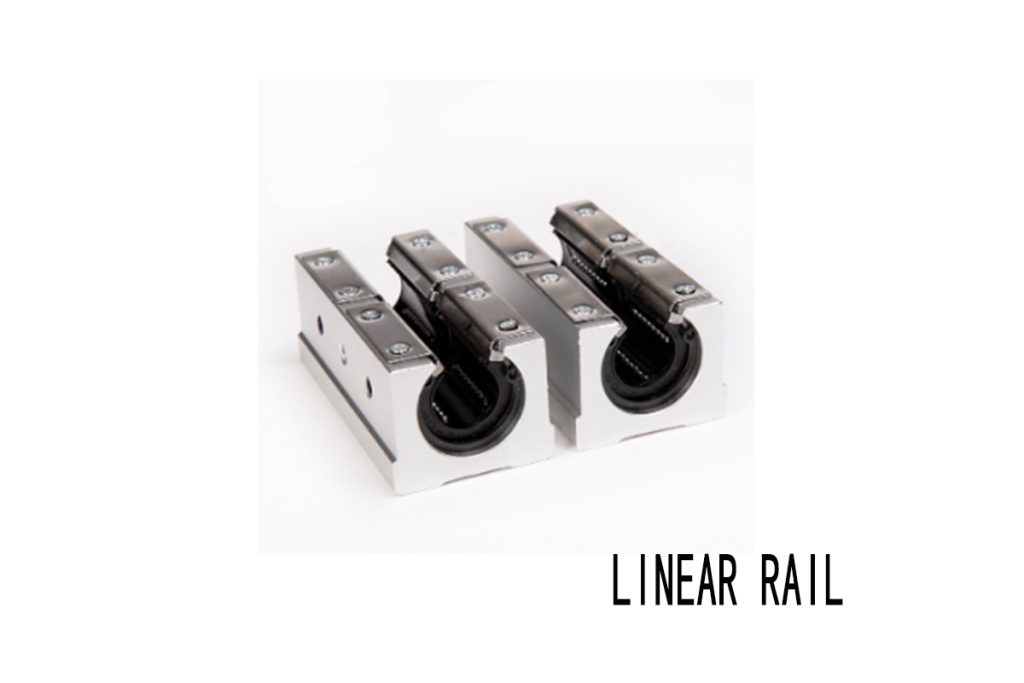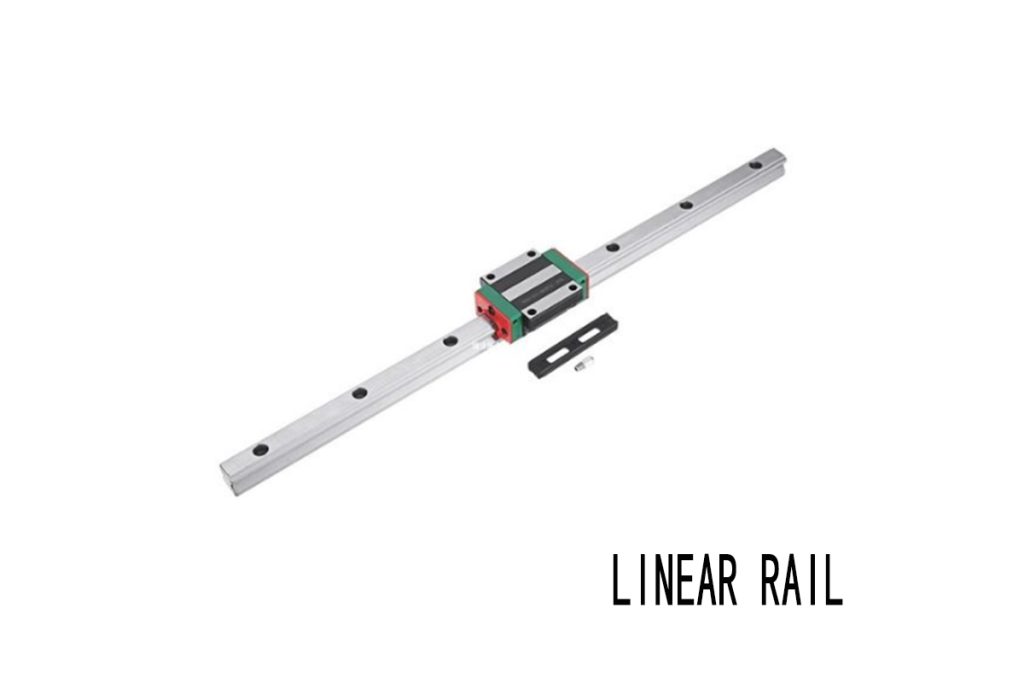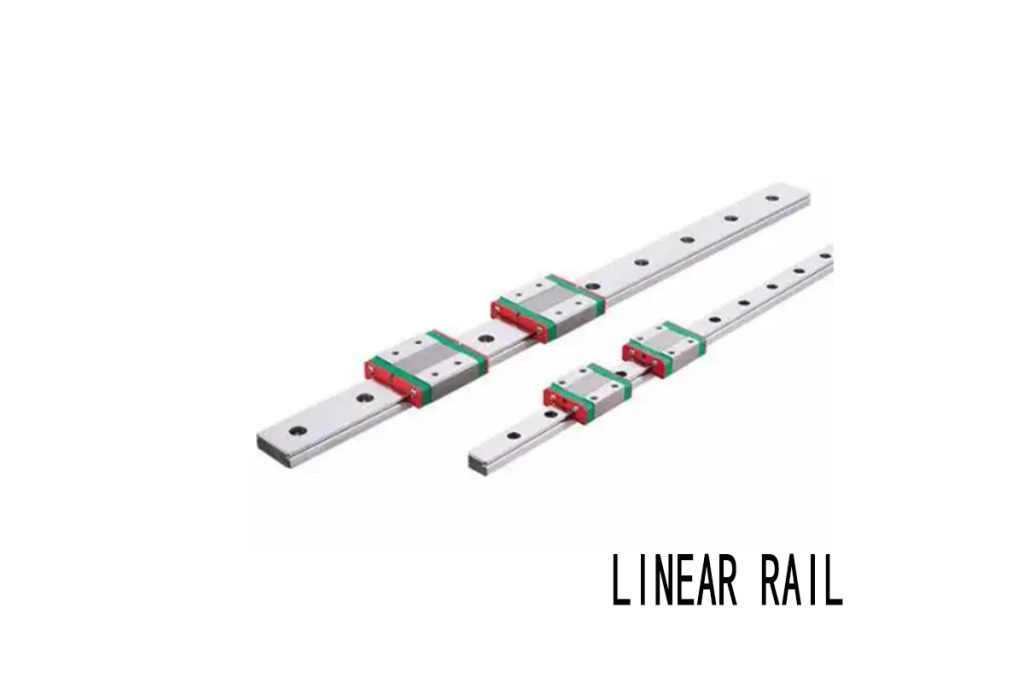Introduction
Overview of the Significance of Linear Rails in Industrial Applications
Linear rails are essential components in many industrial applications, providing precise guidance and support for moving parts in machinery. They are critical for ensuring smooth, accurate, and reliable motion, which is vital in various sectors, including manufacturing, automation, robotics, and medical equipment. Linear rails enhance the performance of machines by reducing friction, improving load capacity, and maintaining alignment, thereby increasing efficiency and productivity.
Importance of Choosing the Right Brand for Optimal Performance
Selecting the right brand of linear rail is crucial for achieving optimal performance in industrial applications. Different brands offer varying levels of quality, precision, and durability, which can significantly impact the functionality and longevity of the machinery. Factors such as load capacity, speed, environmental conditions, and maintenance requirements must be considered when choosing a linear rail system. High-quality linear rails from reputable brands can lead to reduced downtime, lower maintenance costs, and improved overall system performance.
Introduction to Bosch Rexroth, Hiwin, and HepcoMotion as Leading Manufacturers
In the competitive market of linear rails, Bosch Rexroth, Hiwin, and HepcoMotion stand out as leading manufacturers, each offering unique strengths and innovations. Bosch Rexroth is renowned for its precision engineering and robust product range, making it a trusted choice in various industries. Hiwin is celebrated for its advanced technology and high-performance products, catering to demanding applications with rigorous standards. HepcoMotion is known for its innovative solutions and commitment to quality, providing versatile and reliable linear rail systems for a wide array of industrial uses.
we will delve into the specific features, benefits, and competitive advantages of Bosch Rexroth, Hiwin, and HepcoMotion linear rails. By comparing these top brands, we aim to help you make an informed decision when selecting the best linear rail system for your needs.

Material Specifications and Structural Features
Detailed Analysis of Material Specifications Used by Bosch Rexroth, Hiwin, and HepcoMotion
The material specifications of linear rails play a pivotal role in their performance, durability, and reliability. Bosch Rexroth, Hiwin, and HepcoMotion each employ high-quality materials to ensure optimal functionality in demanding industrial applications.
| Brand | Material | Key Features |
| Bosch Rexroth | Premium-grade hardened steel | Wear resistance, longevity, chrome plating for corrosion resistance and smooth motion |
| Hiwin | High-carbon steel | Balance between strength and flexibility, black oxide coating for oxidation resistance, polished surfaces |
| HepcoMotion | High-strength steel alloys | Superior load-bearing capacity, proprietary heat treatment for enhanced hardness and durability |
Structural Features That Define the Durability and Precision of Their Linear Rails
The structural features of linear rails from Bosch Rexroth, Hiwin, and HepcoMotion are designed to maximize durability and precision, ensuring reliable performance in various industrial environments.
Bosch Rexroth: Bosch Rexroth’s linear rails are characterized by their rigid construction and precision-ground surfaces. The rail profiles are designed to minimize deflection under heavy loads, enhancing stability and accuracy. The incorporation of high-precision ball bearings ensures smooth and consistent motion.
Hiwin: Hiwin’s linear rails feature optimized rail geometry, which provides excellent load distribution and minimizes stress concentrations. The use of double-row bearing configurations increases the rail’s load capacity and stability. Hiwin also offers self-lubricating options, reducing maintenance requirements.
HepcoMotion: HepcoMotion emphasizes modular design in their linear rails, allowing for easy integration and customization. Their rails feature preloaded carriage systems that eliminate backlash and improve positional accuracy. The integrated wiper seals and protective covers ensure the rails remain free of debris, enhancing longevity.
Comparison of Design Innovations and Their Impact on Performance
Each manufacturer brings unique design innovations to their linear rails, impacting their performance and suitability for specific applications.
Bosch Rexroth: Bosch Rexroth’s ball runner blocks with integrated sensors provide real-time data on rail performance, allowing for predictive maintenance and minimizing downtime. Their linear guides also feature optimized contact surfaces that reduce friction and wear, extending the lifespan of the rails.
Hiwin: Hiwin’s QH series rails incorporate a synchMotion technology, which distributes lubricant more evenly and reduces friction, resulting in quieter and smoother motion. Their reinforced rail designs enhance vibration dampening, making them ideal for high-speed and high-precision applications.
HepcoMotion: HepcoMotion’s V guide technology offers superior self-cleaning capabilities, preventing debris build-up and maintaining smooth operation. Their DLS (driven linear systems) are designed for easy integration into automation systems, providing flexibility and efficiency in various industrial settings.
In conclusion, the material specifications and structural features of linear rails from Bosch Rexroth, Hiwin, and HepcoMotion demonstrate each brand’s commitment to quality and innovation. By understanding these differences, users can make informed decisions to select the best linear rail system for their specific needs, ensuring optimal performance and reliability in their applications.
Size Range and Compatibility
Linear rails are crucial components in various industrial applications, providing precision guidance and stability. In this section, we will delve into the size range and compatibility offered by three leading brands in the linear rail industry: Bosch Rexroth, Hiwin, and HepcoMotion. Understanding the size options and compatibility features of these brands can help in selecting the right linear rail for specific applications.
Range of Sizes Offered by Each Brand
Bosch Rexroth provides an extensive range of sizes for their linear rails. Their product lines include miniature rails for compact applications as well as larger rails for heavy-duty uses. The sizes typically range from small cross-sectional dimensions suitable for precise, low-load tasks to robust sizes capable of handling significant loads and high-speed operations.
Hiwin also offers a diverse size range for their linear rails. They cater to a wide array of applications, from miniature sizes designed for electronics and small automation systems to larger profiles for industrial machinery and automation lines. Hiwin’s size options ensure that users can find a suitable linear rail for both light and heavy-duty applications.
HepcoMotion focuses on providing high-strength linear rails with varied size options to meet different industrial needs. Their size range covers small, medium, and large profiles, each designed to handle different load capacities and application requirements. HepcoMotion’s commitment to offering a broad size range ensures compatibility with a wide variety of machines and systems.
Compatibility with Different Applications and Industry Standards
| Brand | Compatibility |
| Bosch Rexroth | Highly compatible with various industry standards, seamless integration, reliable performance in automation, robotics, and CNC machinery, emphasizes modularity |
| Hiwin | Versatile and adaptable, adheres to international standards, used in semiconductor manufacturing, medical devices, and heavy machinery |
| HepcoMotion | Meets stringent industry standards, compatible with different mounting configurations and accessories, suitable for aerospace, automotive, and packaging |
Advantages and Limitations Based on Size Variations
The size variations of Bosch Rexroth linear rails offer several advantages. Smaller sizes are ideal for applications requiring high precision and minimal space, while larger sizes provide robust support for heavy loads and high-speed operations. However, the limitation lies in the specific application needs; selecting the wrong size could lead to suboptimal performance or increased wear.
Hiwin’s range of sizes provides a balance between strength and flexibility. The miniature sizes are advantageous for delicate and precise tasks, while the larger sizes support substantial loads. A potential limitation is that extreme customization might be necessary for very specialized applications, which could increase costs and lead times.
HepcoMotion’s size options are designed to maximize load-bearing capacity and durability. The advantage of this range is its suitability for high-precision and high-load applications, ensuring stability and performance. The limitation, however, is that their high-strength alloys and specialized treatments might be over-specified for simpler, low-load tasks, leading to unnecessary expense.
In conclusion, Bosch Rexroth, Hiwin, and HepcoMotion offer a wide range of sizes and compatibility options in their linear rail product lines. Each brand brings unique advantages and potential limitations based on their size variations, ensuring that users can find the right linear rail to meet their specific application requirements.

Installation Guidelines
Linear rails are essential components in numerous industrial applications, ensuring precise movement and stability. Proper installation is crucial for maximizing the performance and longevity of linear rails. This section will provide detailed installation guidelines, required tools, and a comparative analysis of the installation complexity and ease for Bosch Rexroth, Hiwin, and HepcoMotion.
Step-by-Step Installation Instructions
| Bosch Rexroth | Description |
| Preparation | Clean the mounting surface thoroughly to remove any debris or contaminants. Ensure the surface is flat and level to avoid misalignment. |
| Positioning | Place the linear rail on the mounting surface, aligning it with the reference marks. Use alignment tools to ensure accurate positioning. |
| Fastening | Secure the linear rail using screws or bolts, starting from the center and working towards the ends. Tighten the fasteners to the recommended torque specifications provided by Bosch Rexroth. |
| Verification | Check the alignment and parallelism of the linear rail using a dial gauge or similar precision instrument. Adjust as necessary to achieve perfect alignment. |
| Final Check | Once installed, move the carriage along the linear rail to ensure smooth motion without any binding or resistance. |
| Hiwin | Description |
| Surface Preparation | Clean the mounting surface and ensure it is free from dust, oil, and other contaminants. Verify the flatness and levelness of the surface. |
| Rail Placement | Position the linear rail on the prepared surface, aligning it with pre-marked reference lines. Use alignment tools to ensure precise placement. |
| Securing the Rail | Fasten the linear rail using screws or bolts, starting from the center and tightening outward. Follow Hiwin’s torque specifications to avoid over-tightening. |
| Alignment Check | Use a dial indicator to verify the alignment of the linear rail. Adjust as necessary to achieve the required precision. |
| Functional Test | Move the carriage along the linear rail to check for smooth and consistent movement. Make any final adjustments to ensure optimal performance. |
| HepcoMotion | Description |
| Cleaning and Preparation | Clean the mounting surface and ensure it is flat, level, and free from contaminants. This step is critical to avoid misalignment. |
| Rail Alignment | Place the linear rail on the mounting surface, aligning it with reference marks or using alignment jigs. Ensure the rail is perfectly aligned. |
| Fastening | Secure the linear rail with screws or bolts, following a tightening sequence from the center outwards. Use the torque values specified by HepcoMotion to ensure proper fastening. |
| Alignment Verification | Check the alignment and straightness of the linear rail using precision measurement tools. Adjust if necessary to achieve the desired alignment. |
| Performance Check | Slide the carriage along the linear rail to ensure smooth and uninterrupted motion. Perform any final adjustments as needed. |
Tools and Equipment Required for Proper Installation
For the installation of linear rails from Bosch Rexroth, Hiwin, and HepcoMotion, the following tools and equipment are typically required:
Cleaning supplies (e.g., solvents, wipes)
Alignment tools (e.g., alignment jigs, straight edges)
Precision measurement tools (e.g., dial gauges, micrometers)
Fastening tools (e.g., torque wrenches, screwdrivers)
Leveling tools (e.g., spirit levels, laser levels)
Comparative Analysis of Installation Complexity and Ease
Bosch Rexroth: The installation process for Bosch Rexroth linear rails is straightforward but requires careful attention to detail. The emphasis on modularity and precise alignment makes it relatively easy for experienced technicians to install these rails accurately.
Hiwin: Hiwin’s linear rails are designed for versatility and adaptability, which simplifies the installation process. However, achieving the necessary precision can be challenging for those without specialized training. The detailed instructions and adherence to international standards aid in streamlining the process.
HepcoMotion: Installing HepcoMotion linear rails involves a systematic approach that prioritizes precision and alignment. While the process is straightforward, the stringent standards and high-strength materials may require additional care and expertise. The detailed guidelines provided by HepcoMotion help mitigate complexity.
In conclusion, proper installation of linear rails from Bosch Rexroth, Hiwin, and HepcoMotion is crucial for optimal performance. Each brand offers detailed instructions and requires specific tools to ensure accurate and efficient installation. Understanding the nuances of each brand’s installation process can help in selecting the most suitable linear rail for your application.

Conclusion
In this comprehensive analysis, we’ve delved into the competitive strengths and technological innovations of three industry giants in the linear rail sector: Bosch Rexroth, Hiwin, and HepcoMotion. Each brand brings unique capabilities and advantages to the table, making them formidable choices for various industrial applications.
Summary of Comparative Analysis:
Bosch Rexroth, known for its robust engineering and precision, stands out with its advanced ball and roller rail systems. Their emphasis on durability and high load capacities makes them ideal for heavy-duty applications where reliability is paramount.
Hiwin, on the other hand, excels in innovation, continuously pushing the boundaries with their patented technologies such as the motion control system and linear motor drive. Their products are favored in industries requiring exceptional speed and accuracy.
HepcoMotion distinguishes itself with its extensive range of linear motion products, including linear guides, linear actuators, and ring systems. Their focus on customizable solutions and reliability has earned them a strong reputation in automation and packaging industries.
Key Considerations for Selecting the Best Linear Rail Brand:
Application-Specific Requirements: Consider the specific demands of your application, such as load capacity, speed, precision, and environmental conditions.
Customization Options: Evaluate each brand’s ability to provide tailored solutions that meet unique operational needs and integration requirements.
Cost Efficiency: Balance initial investment with long-term maintenance costs and the potential for operational efficiency gains.
Technical Support and Service: Assess the availability and quality of technical support, training, and after-sales service offered by each brand.
Final Thoughts on the Evolving Landscape of Linear Rail Technology:
The linear rail industry continues to evolve rapidly, driven by technological advancements and increasing demands for efficiency and precision in industrial automation. Bosch Rexroth, Hiwin, and HepcoMotion are at the forefront of this evolution, continually innovating to meet the evolving needs of global markets.
As industries move towards greater automation and digitalization, the role of linear rail systems becomes increasingly pivotal in enhancing productivity and performance across diverse sectors. The choice between these leading brands ultimately depends on specific application requirements, budget considerations, and the desired level of technical support.
In conclusion, whether you prioritize robust engineering, cutting-edge innovation, or versatile customization, Bosch Rexroth, Hiwin, and HepcoMotion offer compelling solutions that cater to a wide spectrum of industrial applications. Understanding your operational needs and aligning them with the strengths of each brand will ensure the optimal selection of linear rail technology for your projects.
To meet your requirements, I will generate content for the section titled “FAQs: Common Questions About Linear Rail Technology” for the article “Linear Rail Technology Face-Off: Bosch Rexroth vs Hiwin vs HepcoMotion”. Here’s the content:
FAQs: Common Questions About Linear Rail Technology
What is linear rail technology?
Linear rail technology refers to a system that facilitates linear motion in various industrial and automation applications. It consists of a rail and a carriage or slider that moves along the rail, providing smooth and precise movement.
What are the main components of a linear rail system?
A typical linear rail system comprises a rail, carriage or slider, rolling elements (such as balls or rollers), and often a lubrication system. The rail serves as the guide for the carriage, while the rolling elements reduce friction and enable smooth motion.
How does linear rail technology differ from traditional bearing systems?
Unlike traditional bearing systems, which often use rotational motion, linear rail technology enables straight-line motion. This makes it ideal for applications requiring precise positioning and high repeatability.
What are the advantages of using linear rail systems?
Linear rail systems offer several advantages, including:
High Precision: They provide precise linear motion, crucial for applications demanding accuracy.
Smooth Operation: With minimal friction, linear rails ensure smooth and quiet operation.
High Load Capacity: They can support significant loads while maintaining stability and performance.
Longevity: Properly maintained linear rail systems can have a long service life, reducing downtime and maintenance costs.
What industries commonly use linear rail technology?
Linear rail technology finds widespread use in industries such as:
Automation and Robotics: Used in robotic arms, automated manufacturing, and material handling systems.
Machine Tools: Essential for precision machining and CNC (Computer Numerical Control) machines.
Medical Devices: Used in medical imaging equipment, diagnostic instruments, and surgical robotics.
Packaging: Ensures precise movement in packaging machinery for efficient production.
How do Bosch Rexroth, Hiwin, and HepcoMotion differentiate their linear rail products?
Each brand offers unique features and innovations:
Bosch Rexroth: Known for robust engineering and durability in heavy-duty applications.
Hiwin: Innovates with technologies like linear motors and high-speed capabilities.
HepcoMotion: Focuses on customization and reliability, catering to diverse automation needs.
What factors should be considered when selecting a linear rail system?
When choosing a linear rail system, factors to consider include:
Application Requirements: Such as load capacity, speed, and environmental conditions.
Budget: Balancing initial investment with long-term operational costs.
Technical Support: Availability of support, training, and after-sales service.
How can I optimize the performance of a linear rail system?
To optimize linear rail system performance, ensure regular maintenance, proper lubrication, and alignment. Follow manufacturer guidelines for installation and operational parameters.
